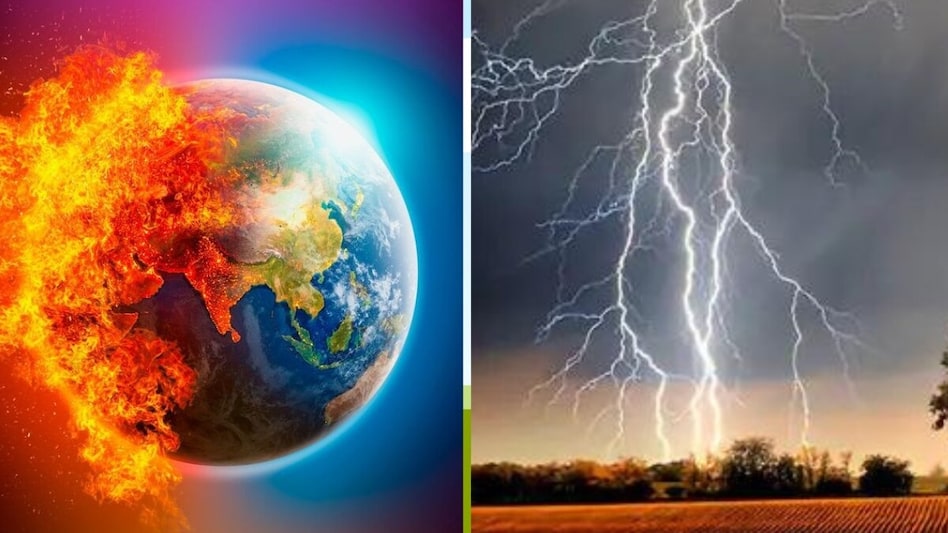 And when it does, the consequences could ripple through agriculture, disaster response, and entire economies — starting in 2025.
And when it does, the consequences could ripple through agriculture, disaster response, and entire economies — starting in 2025.
 And when it does, the consequences could ripple through agriculture, disaster response, and entire economies — starting in 2025.
And when it does, the consequences could ripple through agriculture, disaster response, and entire economies — starting in 2025.It doesn’t announce itself with thunderclaps or raging winds. It doesn’t trend on social media or get name-dropped in climate summits. But for decades, it has quietly choreographed the rhythm of storms, droughts, and rainfall across continents.
The Atlantic Multidecadal Oscillation — AMO, for short — is a vast oceanic cycle most people have never heard of. But if current forecasts are right, that could change as soon as next year.
Researchers are warning: the AMO may be about to flip.
And when it does, the consequences could ripple through agriculture, disaster response, and entire economies — starting in 2025.
An ocean’s heartbeat
Unlike El Niño, which stirs headlines every few years, the AMO moves at a glacial pace, shifting phases roughly every 60 to 80 years. But its impact is anything but slow.
When the AMO turns warm, Atlantic waters heat up, hurricanes strengthen, and weather patterns intensify. When it turns cool, those patterns reset. Storms ease off, but rainfall redistributes — some regions get wetter, others, parched.
The AMO has been in a warm phase since the late 1990s, overlapping with some of the most destructive hurricane seasons on record. Katrina. Harvey. Irma. All emerged during this period of heightened ocean heat.
But now, subtle dips in sea surface temperatures are catching the eyes of scientists. Climate models — powered by supercomputers at NOAA and the UK Met Office — are aligning on a new prediction: there’s a strong chance the AMO could turn cool by 2025.
History's overlooked signals
This isn’t the first time the AMO has reshaped the world. Back in the 1960s, when the cycle last cooled, the African Sahel plunged into a prolonged drought. The fallout was devastating — crop failures, famine, mass migration. The dry spell stretched into the 1980s, displacing millions.
Then came the warming flip of the '90s. Suddenly, hurricanes surged. The 2000s brought storms like Katrina and Rita. While climate change supercharged their impact, the AMO set the stage.
Scientists from NOAA and across academia have pored over decades of climate records, drawing clear lines between the AMO’s rhythm and regional climate shifts.
Their warning today? This cycle isn’t theoretical. It’s due.
A global reshuffling
If the AMO turns cool, the headlines could shift. Fewer hurricanes might sound like good news for Gulf Coast communities. Insurance premiums might dip. Emergency funds might stretch further.
But the changes won’t stop there.
Models suggest Europe and parts of the US might get wetter. The Midwest, for instance, could see more rain during key planting seasons — good for crops, if the fields don’t flood. Meanwhile, the Amazon and West Africa may dry out again, recalling the crises of past decades.
A 2023 study published in Nature Climate Change puts the likelihood of a cool phase by 2025 at 70%. That’s not just a forecast — it’s a wake-up call.
Cost of looking away
We’ve seen what happens when we ignore slow-moving threats. The Dust Bowl. The Sahel famine. Hurricanes devastating unprepared cities.
What makes the AMO unique is its scale and stealth. It doesn’t show up in weather apps. It doesn’t get the attention of melting glaciers or record heat waves. But it works in the background, rearranging the climate chessboard.
“We have to stop thinking of it as background noise,” one NOAA scientist noted. “It’s more like the bassline in a song — you don’t always notice it, but it sets the tone for everything else.”
The AMO’s next note may already be playing. Whether we listen — or wait to feel the beat drop — is up to us.